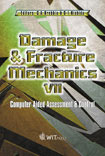Effect Of Material Conditions On Structural Integrity Assessment
Price
Free (open access)
Transaction
Volume
37
Pages
Published
2002
Size
342 kb
Paper DOI
10.2495/DM020371
Copyright
WIT Press
Author(s)
J Vojvodic-Tuma, N Gubeljak & M Oblak
Abstract
High strength low alloy (HSLA) steels are used for the manufacturing of engineering structures (pipes, pressure vessels, cranes, off-shore structures, etc.), where they are exposed to different environmental influences and material ageing processes. Parts of the structures are also deformed during installation. However, the mechanical properties of steels change during manufacture and over their service lives. The consequences of this are changes in the resistance of steel in relation to ductile crack growth. The aim of this paper is to estimate the change in the ductile growth resistance of HSLA steels in relation to different supply conditions at room temperature and TNDT temperatures and their effect on structure integrity assessment. The results show that decrease in mechanical properties and fracture toughness values contributed to higher risk of structure failure. 1 Introduction According to structure integrity procedures [I, 2, 3], the fracture behavior of structure’s materials depends on loading conditions, geometry of component and material properties. Therefore, in those cases when loading conditions and geometry of component are known, the material should ensure the integrity of the structures. The problem becomes serious if the materials properties change during manufacturing, installation or service. This can lead to unpredictable structure materials’ failure. Hence, it is necessary to estimate the effect of different supply conditions on structural integrity.
Keywords





